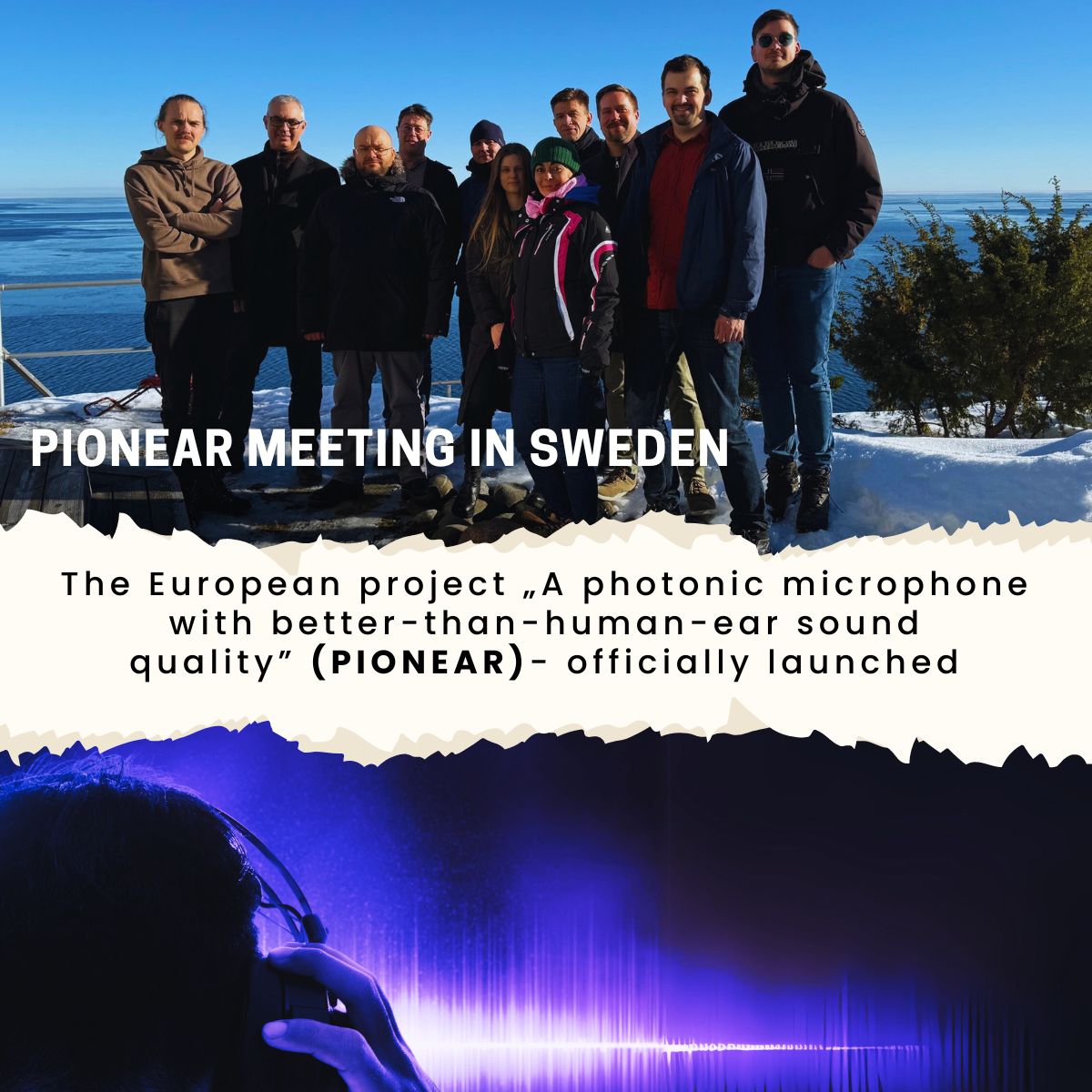Shhh Listen carefully … Despite significant advances in recent decades, microphone technology can still not capture sound as effectively as the human ear. With no microphone achieving a self-noise level of 0 dB SPL (physical hearing threshold), the capability to sense sounds up to 130 dB SPL (jet take-off), and with a bandwidth of 20 kHz, there is room for innovation in this area.
To make this vision a reality, PIONEAR has formed a unique consortium of four research partners and three SMEs from different parts of the world, each known for their expertise in their respective fields. Lukasiewicz – IMiF is part of this consortium. They will work to develop the technology of special vertical external cavity surface emitting lasers (VECSELs), create miniature acoustic chambers and membranes, and assemble and package the final device with the highest precision.
The European project „A photonic microphone with better-than-human-ear sound quality (PIONEAR)” under HORIZON-EIC-2023-PATHFINDEROPEN was officially launched in Härnösand, Sweden. The main objective of the project is to produce a prototype of a novel miniature microphone. This will be made possible by a radically new chromometric sensor solution that PIONEAR will develop through the integration of electronic components, and micromechanical and photonic technologies.
The result of PIONEAR’s success?
With microphones that feature incredibly low noise levels, the devices will have programmable directionality and unparalleled selectivity, effectively mimicking human hearing.
This innovation goes beyond consumer electronics and hearing aids to impact areas such as autonomous robotics, environmental monitoring, and more. Moreover, the sensor concept is not limited to microphones. We expect it to bring similar performance improvements to a wide range of sensor categories such as pressure and ultrasonic sensors, biochemical sensors, gas and aerosol sensors, and accelerometers.


